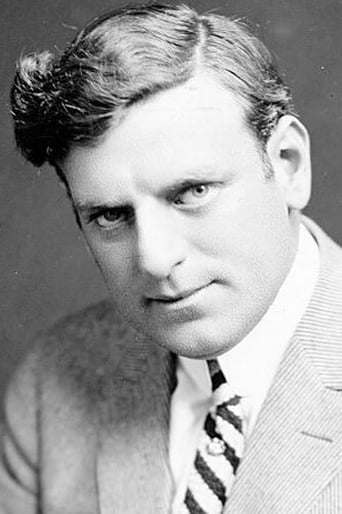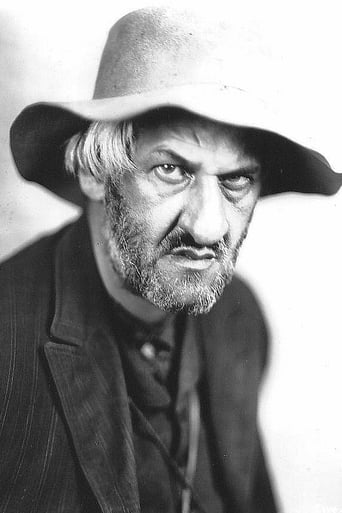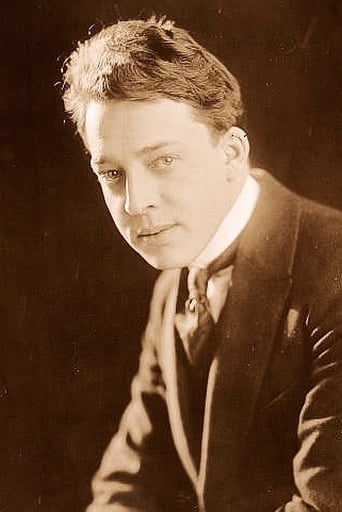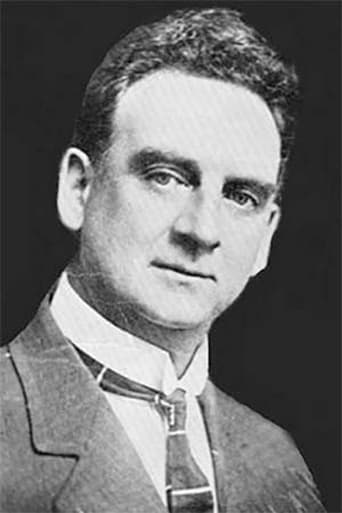He_who_lurks
I remember when I first saw this short American landmark film I was drawn right in. My eyes were glued to the TV. I wasn't even a little bored. I sat and watched for a full 10 minutes and after the watch I had a feeling of sensation. This movie is chock full of action and violence. There isn't hardly a dull moment, because the action begins right within the first few seconds of the film! Edwin S. Porter sure knew how to draw his viewers in. Probably the best part is the chase scene. And the part where the leader of the gang fires his six-shooter at the camera is all too quick.The film begins in a telegraphist's office, where two of the bandits make him send a telegraph to the conductor to stop the train. Then all 4 bandits sneak aboard and make the engineer disconnect the locomotive from the other cars so the thieves can escape. But, in the end the telegraphist's daughter finds him and unties him. An alarm is given, and the bandits are chased and in the end shot down. Then the part comes where the bandit fires away at the camera to finish the film. I wonder if that was frightening for the audience in 1903? Possibly, but I think enough time had gone by for audiences to know that what they were watching really just an image on a screen.The print I've watched includes hand-coloring in some spots, including the famous image at the end. Mostly, the coloring is used to show explosions of gun smoke, but the dancers in the dance hall have their dresses colored too as well as the banners.On a side note, the famous shot was not always shown at the end of the film. According to what I've read, exhibitors could choose whether to put it at either the beginning or end of the short. As far as I know, it is most common for it to be at the end.
WakenPayne
I would say watch this movie with the intention in mind that film had only really existed for about 15 years maximum considering I've seen footage from the 1880's. I will say that back then there was no story to speak of with any movie at the time and I don't think many people saw the potential for what it could do. So this gave birth to film editing. I will say the plot is really nothing special but being that this is the first go at editing in history I thought I should talk about the technical elements. I was impressed by how much this felt like it was The Wild West and I also liked how many people they took in to get this made when at this point, film was just a cheap amusement to the public eye. But there are some weaknesses with it, To say the number of robbers in the robbery is inconsistent is an understatement. First there's 2, then 4, then 3 it's a mess. That and I don't know what the significance of the last shot is. It's one of a guy in a stationary location that has nothing to do with what has been seen looking directly at you and firing a gun. I guess because back then editing was a new concept that they could get some of the cheap amusement side of it that it was at the time at the ending but I don't think it ages well. All in all, I would say watch it if you're a fan of westerns or want to know about film history.
ironhorse_iv
This film is like wine. The older it gets, the better the nostalgia. Why would anyone dislike this movie? Of course, to our generation, it's basically dated, but back then it was such a leap forward in film-making. There wasn't that much movies as there is now. It's hard to judge a movie based on a modern understanding of it; after all movies over a century of cinema having touched almost every subject imaginable. I've always wondered what the people who made all these original films would think of the films today, with all the technological advancements. It really is quite amazing to see material like this film still being watch today. To truly analysis a film like this, one must look back at the time, in which it was shot and find the real truths. Myth number one: it's the first movie ever made. The Great Train Robbery is not the 1st. Asking what was the first movie ever made is a bit like asking which came first, the chicken or the egg. It's hard to give a definitive reply. If you consider Edison's Kinetoscope shorts to be movies, the first movies were from 1893, not 1903. Some historian claim that the first ever video footage was 1893's New York Fire Brigade footage. There might a film that earlier than that. The earliest celluloid film was shot by Louis Aimé Augustin Le Prince using the Le Prince single-lens camera made in 1888 call "Roundhay Garden Scene". The short films of the 1870s Praxinoscope were and they were seen mostly as acts in vaudeville programs. The film back then, could be under a minute long and would usually present a single scene, authentic or staged, of everyday life, a public event, a sporting event or slapstick. There was little to no cinematic technique, usually no camera movement, and flat compositions reminiscent of the stage. It wasn't until 1890 that film had more of a story. The narrative cinema started with 1895 L'arroseur arose, follow by 1902 'A Trip to the Moon' and 1903's 'Life of American Fireman'. So when the Great Train Robbery came into production. It wasn't anything near new. About it, being the first western. It might be. I do know, it was first western -- filmed in New Jersey. Another myth about the film is that Thomas Edison made it. First off, Thomas Edison didn't really invented film-making. The very first patented film camera was designed in England by Frenchman Louis Le Prince in 1888. Edison took the invention and his work shop improve upon it. William Kennedy Laurie Dickson, a Scottish inventor and employee of Thomas Edison, designed the Kinetographic Camera. Thomas Edison wasn't anywhere near this movie. It was written, directed, and produced by Edwin S. Porter. The closest he came was his company distributed the film. I give Thomas Edison, some props, as he did know how to market the film. Inspired by Scott Marble's play "The Great Train Robbery" (1896); the ten minutes long movie, depicts a group of criminals robbing a train and its passengers, escaping in the uncoupled locomotive, and being pursued and killed by a posse recruited from a local dance hall. Apart from the title card and the famous shot of an outlaw firing at the audience, the film consists of thirteen shots, taking place in three interior and a variety of exterior locations. There are no famous silent film inter titles. It was one of the longest narrative films produced. The movie was ground-breaking in the milestone of film making. It contains early uses of what would come to be standard cinematic techniques: composite editing (via multiple exposure), location shooting, intercutting between simultaneously-occurring scenes, cutting within the same scene to compress time, and camera movement. Some prints were also hand colored in certain scenes. The movie was surprising very violent; this was way before any Hayes Codes was established. I was deeply move, how realistic, the movie was to the real life era. It wasn't the same corny Westerns film that came out in the 1930 thru the 1950. It wasn't the over the top, Spaghetti Western of the 1960s & 1970s. This film look like it came from that era. It indeed posed and acted in faithful adaption. I love the fact, that the final shot of a gun being fired toward the camera had a profound effect on audiences. As cinema was in its infancy, many people who saw the film thought that they were actually about to be shot. I can sort of see why. It did had a quite a jump in quick shots. Imagine what that would have been for people who have not yet developed the 'it's only a movie' instinct. I love how the movie influence other future works like the James bond series, with the gun barrel sequences. The final shot is also paid homage in Martin Scorsese's 1990 film, 'Goodfellas' & Ridley Scott's 2007 film 'American Gangster'. In 1990, The Great Train Robbery was selected for preservation in the United States National Film Registry by the Library of Congress as being "culturally, historically, or aesthetically significant'. The movie is in the public domain due to age. Most copies are incredibly well preserved. Others could have wear & tear. In my version, the night scenes were a little too dark. Another fault is that there was no original soundtrack. Films from this period were accompanied by whatever the pianist, organist, orchestra decided to play for the most part. It was later in the silent era when scores were written specifically for the film and many of those no longer survive. Overall: it's historical valuable, and fun to watch. A must watch for any silent film fan.
Doug Kamm
This is a fun, silent film. I feel it is a very complete and compelling story of its time which brings to life the concept of train robbers & legions of the time. As far as the technical side of things, I really enjoyed the use of camera-work. The use of the different camera angles and locations of the film really makes it interesting. I also enjoyed the use of additive coloring. I did feel that it was a tad slow for my taste but I shouldn't be too critical because it came in out 1903. For silent films that I've seen, I felt The General & Nosferatu are a little smoother but considering that those both came out 20 plus years later that would be an unfair judgment. All in all, though it is a good film and I give it a 6 out of 10.




